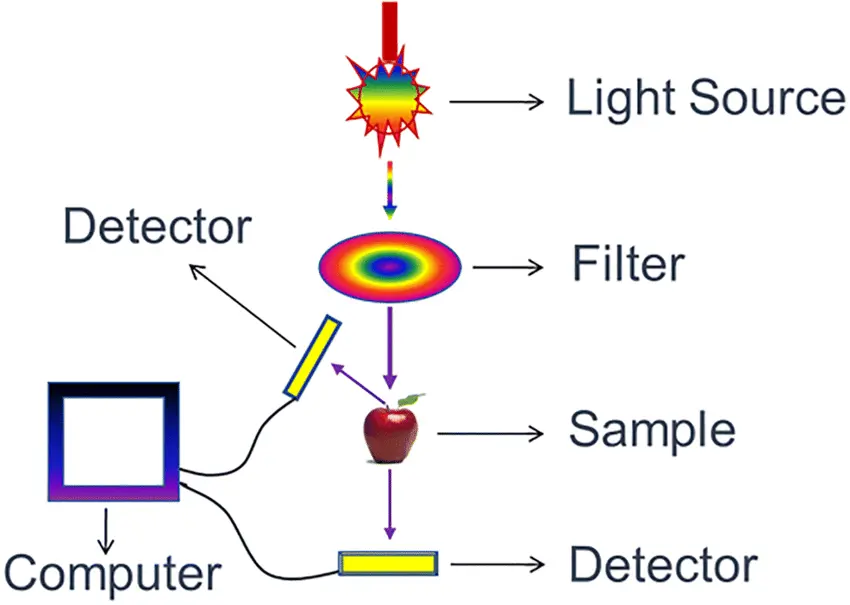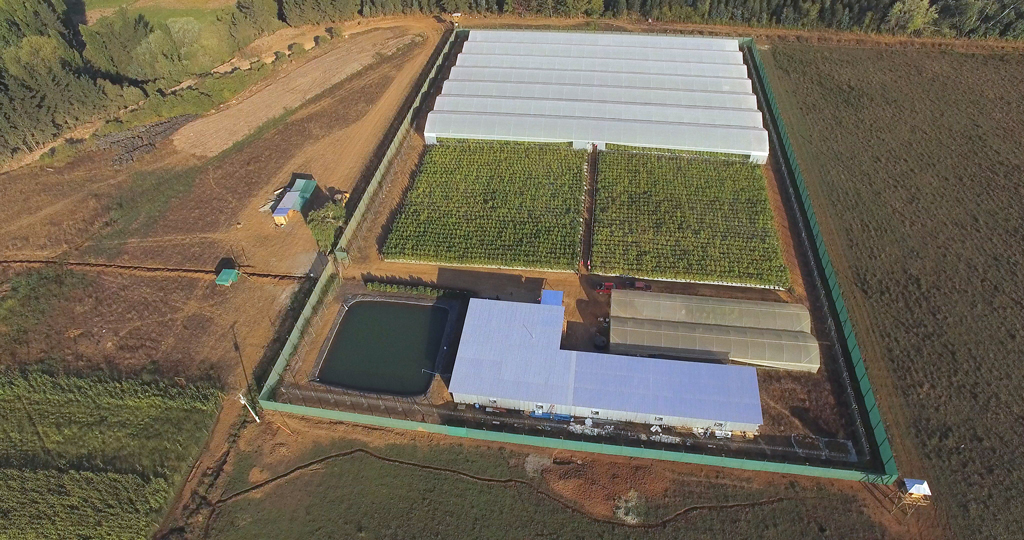Contents
The cannabis industry has experienced significant growth in recent decades. As the market expands and demand for quality increases, new technologies are developing at pace. One of these is Near-infrared spectroscopy cannabis sensor tech, or NIRS for short.
Infrared spectroscopy
The most important aspect of commercial cannabis production is ensuring a high-quality end product with consistent stability from one cultivation to the next. Traditionally, the cannabinoid content in the flowers is measured using gas chromatography-mass spectrometry (GC-MS) and High-Performance Liquid Chromatography (HPLC).
However, both methods have significant drawbacks: it is too expensive for routine use in cultivation, and if growers do not have their own equipment, sending samples to an external laboratory can be both costly and time-consuming.
Fortunately, growers are moving away from the complicated GC-MS method and are using more efficient spectroscopic techniques. These methods are environmentally friendly, quick, and require minimal training. Many commercial growers are now choosing near-infrared spectroscopy (NIRS) to analyze their cannabis crops, as it offers a cost-effective solution with high accuracy in determining active substances.
Near-infrared Spectroscopy (NIRS)
Near-infrared spectroscopy (NIRS) is an instant, non-destructive way to “see inside” plant material without harming it. Instead of waiting for lengthy lab tests, growers can point a NIRS device at buds or leaves and instantly get a chemical profile, such as moisture levels, cannabinoid content, or nutrient balance.
How does NIRS work?
Near-infrared light is invisible to the human eye, but plants interact with it in very specific ways. When a NIRS device shines this light onto plant material, certain wavelengths are absorbed and others are reflected back, depending on the chemical bonds inside the tissue.
The device reads this ‘spectral fingerprint’ and translates it into useful data through calibration models e.g. by estimating THC percentage or spotting early signs of nutrient deficiency. It’s a bit like reading a barcode, except the code is written in the language of light and molecules.

The real value of Near-infrared spectroscopy is in how it can empower decision making throughout the growing cycle. By tracking plant chemistry in real time, cultivators can fine-tune lighting, feeding schedules, and harvest timing to hit desired potency and flavor targets. Early detection of nutrient imbalances or stress means issues can be fixed before they impact yield or quality.
By turning guesswork into data-driven analysis, IRS measurements can be built into routine checks. There are obvious benefits for commercial operations in terms of product consistency, less waste, and maximizing the efficiency of the cultivation process.
NIR technology will not completely replace GC-MS or HPLC, which remain essential tools for medical cannabis growers. Instead, NIR serves as a complementary method that provides guidance and valuable insights into the plant’s chemical composition. It works by correlating validated laboratory results with the light spectrum data captured by the NIR device.
A study published in 2023 concluded that “future applications of NIRS in Cannabis analysis should be headed towards developing new predictive equations, expanding beyond cannabinoids, terpenes, and moisture content. Further interesting compounds of Cannabis, such as flavonoids, phenols, or alkaloids, show considerable potential in influencing the organoleptic properties of the future medicine.
Furthermore, compounds like heavy metals or pesticides, which are related to possible contamination of the plant, could also benefit from these applications. The portability of this equipment opens doors to new possibilities, enabling direct plant monitoring without the necessity of harvesting.”
Near-Infrared Spectrography: Purple Pro & Neospectra
Infrared spectrography tools vary but offer significant benefits to especially larger scale growers. For small-scale home growers this is not a necessity. Tools like Neospectra and Purple Pro capture a wide range of wavelengths beyond what we can see, allowing for a detailed analysis of the chemistry inside a flower (development of THC levels, CBD levels and terpenes).
This technique is especially interesting when Chemistry is of importance, in processes like phenohunting, the production of medical grade flowers and also breeding.

Is NIRS Solely for Commercial Cultivation?
Professional-grade Near-infrared spectroscopy devices used in large cannabis facilities are predictably expensive – running from several thousand to tens of thousands of dollars, depending on precision, portability, and included software. Those units are designed for industrial-scale quality control, so even the most ambitious home grower would struggle to justify the cost.
However, the tech is becoming more affordable all the time. In recent years, compact, handheld NIRS scanners have entered the market and there are even consumer-focused versions (originally developed for food and agriculture) for under $1,000 (around €850) .
Inevitably, they’re not as precise as lab-grade machines, but for a home grower who’s serious about data-driven cultivation they can still provide very actionable insights. For most hobbyists, the question is probably about whether they’ll use it often enough to justify the cost.
Future Expectations
As new sensor technologies like infrared spectroscopy become more common in growing cannabis, the future looks bright. These tools will improve crop management, boost product quality, and promote sustainable practices.
If you are interested in new technology, you should pay attention to the Netherlands! It is a world leader in horticulture technology and has some of the best growing practices in the industry. With its focus on sustainability and advanced farming tools, the Dutch horticulture industry continues to shape cannabis cultivation worldwide.
A good example of this is the Medical Cannabis Platform for Innovation and Research (MCPIR), to which Paradise Seeds is a contributing partner, providing the genetics used in the project and its experience of cannabis cultivation.
How Sensors Improve Crop Yields and Quality
What is clear is that innovations in sensor technology, like near-infrared spectroscopy, is allowing growers to combine with other automated systems when building a new set-up. Such developments allow better informed decisions by connecting automation systems like irrigation or lighting with real-time data from the sensors about environmental conditions. This will lead to higher crop yields and better plant quality.


